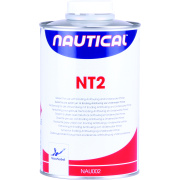Over here @fi, Tips AND tricks
What and how to choose binoculars correctly!
There is a wide range of binoculars on the market, with prices ranging from €50 to well over €1500. Although you can find good quality binoculars for a small amount of money, they are the kind of product where price and quality go hand in hand.
Binoculars for bird and wildlife watching?
The most commonly used sizes for birdwatching are for example 7×42, 8×40, 8×42, 10×42 or 10×50. These models have the best ratio of magnification to front lens diameter for the requirements of the hobby.
If you are a migratory birdwatcher or otherwise want to observe a larger number of birds at once, for example, the wider field of view of the binoculars is an advantage. If you want to observe nesting birds or make more precise identifications of individuals, then a higher magnification is useful.
Binoculars for the sea, boating, fishing or other water sports?
When looking at BOAT, waterproofing and durability are a priority. A rubber coating alone does not guarantee water resistance, but water resistance requires the binocular to be nitrogen-filled. Another important feature of boating binoculars is the lens coating. The better the coating on the lenses, the more light is transmitted from the front lens to the eye, giving the binoculars better light output in low light conditions. In good quality binoculars, this means a light transmission of around 95%.
For a moving and rocking boat, the highest commonly found useful magnification is 7x. Magnifications higher than this require an image stabilizer in boating conditions. With an image stabilizer, binoculars with magnifications of up to 15x or 18x can be used on a boat.
What is the magnification / magnification ratio / magnification factor (Magnification) of binoculars?
Take the example of 10×42 binoculars. The magnification ratio or magnification factor refers to the size of the object when viewed with the naked eye compared to the size of the object when viewed with binoculars.
For example, if the magnification ratio is 10x, the binoculars will magnify the subject tenfold. In other words, an object 100 metres away will appear as close when viewed through binoculars as if you were looking at the same object with the naked eye from 10 metres away. At 8x magnification, an object 100 metres away will look 12.5 metres away when viewed through binoculars.
The advantage of high magnification is that it brings the subject closer to the viewer and makes it easier to distinguish features. However, high magnification also has its drawbacks, as the magnification factor increases, the luminosity of the binoculars decreases. High magnification also tends to make the binoculars heavier, making them more challenging to hold steady. When using hand-held binoculars, hand vibrations and small movements are more noticeable than with lower magnification. As magnification increases, the field of view also shrinks, making it more difficult to pick up a target in the field of view of the binoculars. Despite all this, the right magnification is a matter of taste, and it is impossible to say directly what is right for everyone. Experimentation will reveal your own preference.
The latter figure indicates the diameter of the front lens of the binoculars in millimetres. In our example binoculars, 10×42, the diameter of the front lens is 42mm. The size of the front lens affects the amount of light the binoculars can let in. The larger the diameter, the brighter the image, i.e. the more luminous the binoculars. As the diameter of the front lens is reduced, less light enters the binoculars. This makes the binoculars much less sensitive to low light than a binocular with a larger lens. As the diameter of the front lens increases, so does the size and weight of the binoculars.
What is the Exit Pupil (Exit Pupil)
The exit pupil or exit aperture is the area of bright light that hits the eye when you look through the eyepiece lens of the binoculars. The size of the exit pupil is expressed as the diameter of its aperture in millimetres. The brightness of binoculars depends on the size of the exit pupil; the larger the exit pupil, the brighter the image. The diameter of the exit pupil should always be larger than the pupil of the eye.
The diameter of the pupil of the human eye is about 1.5 – 3 mm in the light and about 7-8 mm in the dark. If the exit pupil of the binoculars is smaller than the pupil of the human eye, it is like looking at the target through a door eye. The human eye changes with age. The maximum size of the pupil decreases with age, so the importance of the exit pupil of binoculars becomes more important in older people.
The size of the exit pupil of a binocular is determined by dividing the diameter of the front lens by the magnification factor. For example, the exit pupil of a 10×42 binocular is 4.2mm (42/10). 4.2mm is a good measurement as it is larger than the pupil of the eye. The exit pupil of an 8×42 is 5.25mm. Since the pupil of the human eye is 1.5-3mm in bright light, in this case the pupil of the eye has room to dilate when it gets darker. The 8×42 is therefore more powerful than the 10×42. With an aperture of 8mm, it gives maximum light to the dilated eye and is therefore ideal for dark environments.
If two binoculars of the same model series have the same output pupil value, the binocular with the higher magnification will produce a brighter image in low light. The output pupil values are always comparable.
Field of View / Angle of View
The terms “field of view” and “angle of view” are complementary. Both terms describe the horizontal view you see when you look at the landscape through binoculars. Field of view is expressed in binoculars in metres of what it is at 1000m, and field of view in degrees of angle. The larger the field of view, the easier it is to find the target within the field of view of the binoculars. With a binocular with a small field of view, getting a target into the binocular image can be really nerve-wracking in places.
The binocular data may talk about the true (optical) angle of view and the apparent angle of view. The true angle of view is the angle of the field of view measured from the centre of the objective lens. The apparent field of view, on the other hand, indicates how wide the field of view appears to the naked eye.
If binoculars show an angle of view without indicating whether it is a real or apparent angle of view, you can easily tell from the size of the number which one it is. If the degrees are small, for example 6.3 or 7.8, then it is a true angle of view. If the degrees are large numbers, e.g. 55 or 68, it is an apparent angle of view.
Twilight factor / Twilight resolution (Twilight Factor)
Twilight resolution indicates the performance of binoculars in low light. The higher the twilight factor, the better the binoculars are suited to low light. A figure of 15 is considered the limit below which binoculars are really only suitable for use in daylight.
Minimum Focus Distance (MDF)
It may seem strange to think about the closest focusing distance for binoculars, when the primary idea is to look far away. However, binoculars are also an excellent tool for spotting insects, for example, or even for museums and art exhibitions, where close focusing is important. Birdwatchers also need a short focusing distance, where binoculars allow them to see small details (beak shape, ring markings, etc.).
Focusing mechanism (Centre Focus / Independent Focus)
Binoculars are available with two different focusing mechanisms. The most common and popular is the centrally mounted binocular, where a focusing ring between the eyepieces adjusts both eyepieces at once. They also have a diopter adjustment, which allows the focus of the binoculars to be fine-tuned to suit the user’s eyes and vision.
The second focusing mechanism is one where the focus of each eyepiece is individually adjusted by its own focusing ring. This allows for very precise focusing, but also slower focusing than with medium focus binoculars.
Mid-focus binoculars are recommended if you are looking at targets at different distances, or if there are several users of the binoculars. Eyepiece-focused binoculars, on the other hand, are suitable for those observing targets at relatively fixed distances (e.g. stargazing, at sea).
Diopter Adjustment (Diopter Adjustment)
Diopter is used to indicate the power of the spectacles, or the refractive index. In binoculars, the diopter adjuster is used to compensate for any difference in vision between the eyes. It allows the focus of the binoculars to be fine-tuned to the user’s eyes and vision. The diopter adjustment also allows most spectacle wearers to view with binoculars without glasses.
Binoculars with automatic focus
Binocular manufacturers use terms such as “self-checking binoculars” or “auto-checking binoculars”, which can be very misleading and confusing for the customer.
These binoculars don’t actually focus automatically, and there’s no mechanism to focus for you. Advertising autofocus is just advertising-speak for marketing companies.
The correct term for such binoculars might be “fixed focus” or “focus-free binoculars”. These fixed focus or permanent focus binoculars, which have no focusing mechanism at all, are designed to provide a clear view of targets from 9 to 18 meters to infinity. These binoculars therefore have a long focusing distance without the need to adjust the focus. Fixed focus binoculars are not suitable for close-up viewing.
Roof prism and porro prism
There are two types of binoculars, the so-called Porroprism binoculars and the roof prism binoculars. The function of prisms is to correct the image so that the view appears natural; without prisms, the image seen through the binoculars would be upside down. Which type of prism the binocular uses can usually be determined directly by looking at the shape and size of the binocular.
In a roof prism binocular, the objective, small central prism and eyepiece are in a straight line, so the binoculars can be designed to be small and lightweight. Roof prism binoculars are straight-lined and resemble the letter H.
In a Porro prism binocular, the centres of the objective and eyepiece are in a different line. This gives the Porro prism binoculars their characteristic curved shape. Light travels along a z-shaped path from the front lens to the eye. Porro prism binoculars have the appearance of “traditional / old-school” binoculars. Porroprima binoculars offer a better depth of field and often a wider field of view than roof prism binoculars. Porroprima binoculars are generally not weatherproof.
Coating (Coating)
As with camera lenses, the coating on binoculars improves light transmission and contrast and reduces reflections. The coating of optical components is an essential part of the quality of binoculars.
Coated means that at least one optical surface is coated.
Fully Coated means that all optical surfaces arecoated.
Multi-Coated means that one or more optical surfaces of one or more lenses aremulti-coated.
Fully Multi-Coated means that all optical surfaces, including the prism, are multi-coated.

 Suomi
Suomi

